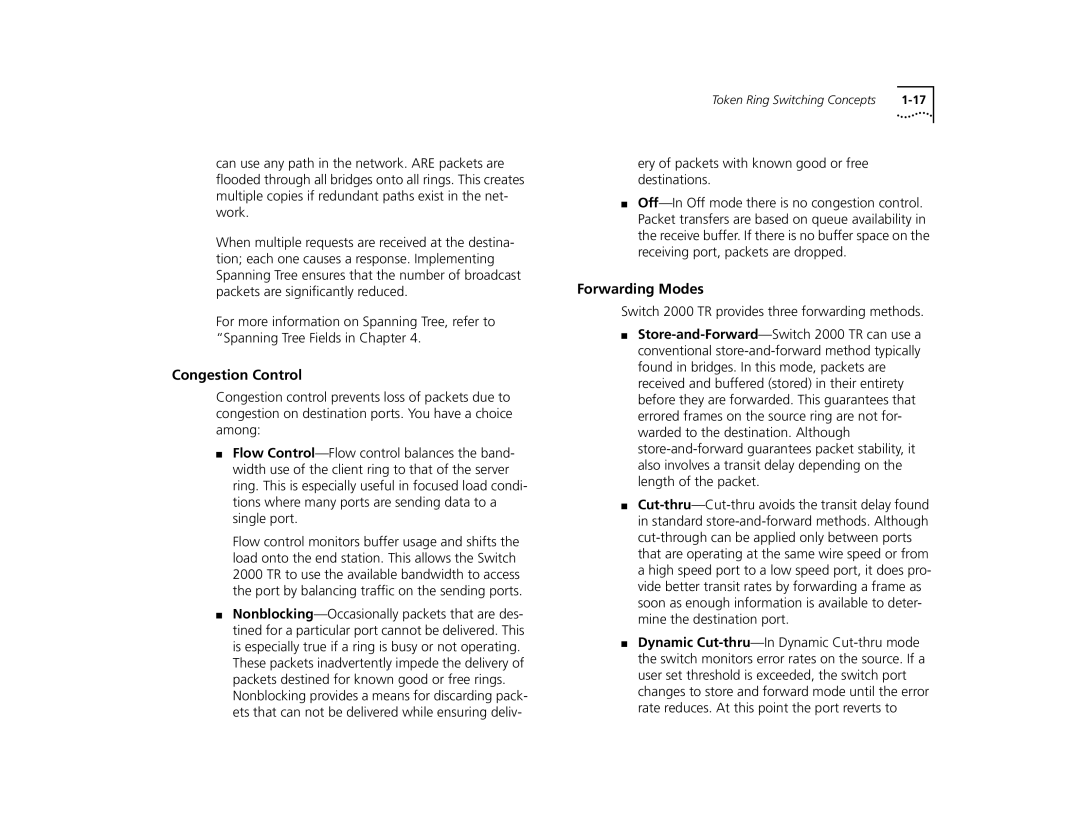can use any path in the network. ARE packets are flooded through all bridges onto all rings. This creates multiple copies if redundant paths exist in the net- work.
When multiple requests are received at the destina- tion; each one causes a response. Implementing Spanning Tree ensures that the number of broadcast packets are significantly reduced.
For more information on Spanning Tree, refer to “Spanning Tree Fields in Chapter 4.
Congestion Control
Congestion control prevents loss of packets due to congestion on destination ports. You have a choice among:
■Flow
Flow control monitors buffer usage and shifts the load onto the end station. This allows the Switch 2000 TR to use the available bandwidth to access the port by balancing traffic on the sending ports.
■
Nonblocking provides a means for discarding pack- ets that can not be delivered while ensuring deliv-
Token Ring Switching Concepts |
ery of packets with known good or free destinations.
■
Forwarding Modes
Switch 2000 TR provides three forwarding methods.
■
■
■Dynamic
